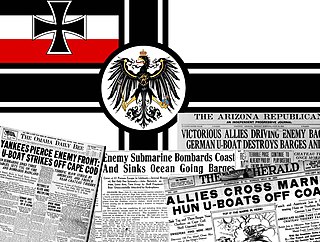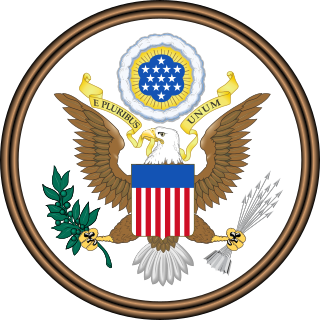 W
WThe Action of 27 March 1942 was a naval battle fought between the United States and Germany during World War II in the Atlantic Ocean. While patrolling 300 miles off Norfolk, Virginia, an American Q-ship encountered a U-boat and a short surface engagement ensued.
 W
WThe Action of 10 November 1944 was a naval engagement of World War II involving an American submarine and a German U-boat. In a short action north of Lombok Strait, the Americans attacked the German vessel which exploded and sank with all hands.
 W
WThe Action of 6 June 1942 was a single ship action fought during World War II. The German raider Stier encountered and sank the American tanker SS Stanvac Calcutta while cruising in the South Atlantic Ocean off Brazil.
 W
WThe Berlin Blockade was one of the first major international crises of the Cold War. During the multinational occupation of post–World War II Germany, the Soviet Union blocked the Western Allies' railway, road, and canal access to the sectors of Berlin under Western control. The Soviets offered to drop the blockade if the Western Allies withdrew the newly introduced Deutsche Mark from West Berlin.
 W
WThe bombing of Dresden was a British-American aerial bombing attack on the city of Dresden, the capital of the German state of Saxony, during World War II. In four raids between 13 and 15 February 1945, 722 heavy bombers of the British Royal Air Force (RAF) and 527 of the United States Army Air Forces (USAAF) dropped more than 3,900 tons of high-explosive bombs and incendiary devices on the city. The bombing and the resulting firestorm destroyed more than 1,600 acres (6.5 km2) of the city centre. An estimated 22,700 to 25,000 people were killed. Three more USAAF air raids followed, two occurring on 2 March aimed at the city's railway marshalling yard and one smaller raid on 17 April aimed at industrial areas.
 W
WBombing of Frankfurt am Main by the Allies of World War II killed about 5,500 residents and destroyed the largest medieval city centre in Germany.
 W
WThe bombing of Nijmegen on 22 February 1944 was an opportunistic aerial bombing raid by the United States Army Air Forces on the city of Nijmegen in the Netherlands, then occupied by Nazi Germany. In terms of the number of victims, it was one of the largest bombardments of a Dutch city during World War II. Officially, nearly 800 people were killed by accident due to inaccurate bombing but, because people in hiding could not be counted, the actual death toll was probably higher. A large part of the historic city centre was destroyed, including Saint Steven's Church. Saint Augustine's Church and Nijmegen railway station were heavily damaged as well.
 W
WThe Bombing of Würzburg in World War II was a large-scale air attack on the city of Würzburg, and was part of the strategic bombing campaign by the Allies against Nazi Germany. Although lacking major armaments industries and hosting around 40 hospitals at the time, Würzburg was targeted as a traffic hub and as part of the attempt by Bomber Command to break the spirit of the German people. The major raid occurred on March 16, 1945, when Royal Air Force bombers dropped incendiary bombs that set fire to much of the city, killing an estimated 5,000 people and almost completely obliterating the historic town. Almost 90% of the buildings were destroyed by a raid that lasted less than 20 minutes.
 W
WDuring World War II, the German city of Heilbronn was bombed numerous times by the British Royal Air Force and the United States Army Air Forces. The largest air-raid occurred on December 4, 1944, but Heilbronn was targeted several times before and after until the end of World War II. Altogether, an estimated 7,000 inhabitants of the city lost their lives during bombings.
 W
WThe Bombing of Bremen in World War II by the British Royal Air Force and US Eighth Air Force targeted strategic targets in the state Free Hanseatic City of Bremen, which had heavy anti-aircraft artillery but only 35 fighter aircraft in the area. In addition to Wesermünde/Bremerhaven, targets were also in Farge and Vegesack. Bremen also included concentration camps such as Bremen-Farge and Bremen-Vegesack. The city of Bremen was captured in April 1945.
 W
WDuisburg was bombed a number of times by the Allies during World War II. The most devastating air raids on Duisburg occurred during October 1944 when the city was bombed by the Royal Air Force (RAF).
 W
WOn 11 December 1941, four days after the Japanese attack on Pearl Harbor and the United States declaration of war against the Japanese Empire, Nazi Germany declared war against the United States, in response to what was claimed to be a series of provocations by the United States government when the U.S. was still officially neutral during World War II. The decision to declare war was made by Adolf Hitler, apparently offhand, almost without consultation. It has been referred to as Hitler's "most puzzling" decision of World War II. Publicly, the formal declaration was made to American Chargé d'Affaires Leland B. Morris by German Foreign Minister Joachim von Ribbentrop in the latter's office. Later that day, the U.S. declared war on Germany.
 W
WThe Kassel World War II bombings were a set of Allied strategic bombing attacks which took place from February 1942 to March 1945. In a single deadliest raid on 22–23 October 1943, 150,000 inhabitants were bombed-out, at least 10,000 people died, the vast majority of the city center was destroyed, and the fire of the most severe air raid burned for seven days. The US First Army captured Kassel on 3 April 1945, where only 50,000 inhabitants remained, versus 236,000 in 1939.
 W
WThe Attack on Orleans was a naval and air action during World War I on 21 July 1918 when a German submarine fired on a small convoy of barges led by a tugboat off Orleans, Massachusetts, on the eastern coast of the Cape Cod peninsula. Several shells fired at defending aircraft fell to earth in the area around Orleans, giving the impression of a deliberate attack on the town.
 W
WThe Battle of Point Judith is the popular name for a naval engagement fought between the United States and Nazi Germany during World War II on May 5 and 6, 1945. American surface combatants and two blimps sank a German U-boat off Point Judith, Rhode Island in one of the last actions of the Battle of the Atlantic. The SS Black Point a 368-foot, 7500 tons coal ship was sunk at the start of the Battle.
 W
WOperation Tidal Wave was an air attack by bombers of the United States Army Air Forces (USAAF) based in Libya and Southern Italy on nine oil refineries around Ploiești, Romania on 1 August 1943, during World War II. It was a strategic bombing mission and part of the "oil campaign" to deny petroleum-based fuel to the Axis powers. The mission resulted in "no curtailment of overall product output."
 W
WOn April 2, 1917, President Woodrow Wilson asked a special joint session of the United States Congress for a declaration of war against the German Empire. Congress responded with the declaration on April 6.
 W
WOn December 11, 1941, the United States Congress declared war upon Germany, hours after Germany declared war on the United States after the attack on Pearl Harbor by the Empire of Japan. The vote was 88–0 in the Senate and 393–0 in the House.
 W
WThe bombing of Treviso, a town in Northeastern Italy, took place on 7 April 1944, during World War II. Aimed at disabling the town's marshalling yard, it resulted in the destruction of most of the town.
 W
WThe Western Allied Campaign in Romania consisted of war declarations and aerial operations during the Second World War by 8 Western Allied countries against Romania which itself was primarily engaged on the Eastern Front in fighting against the Soviet Union.